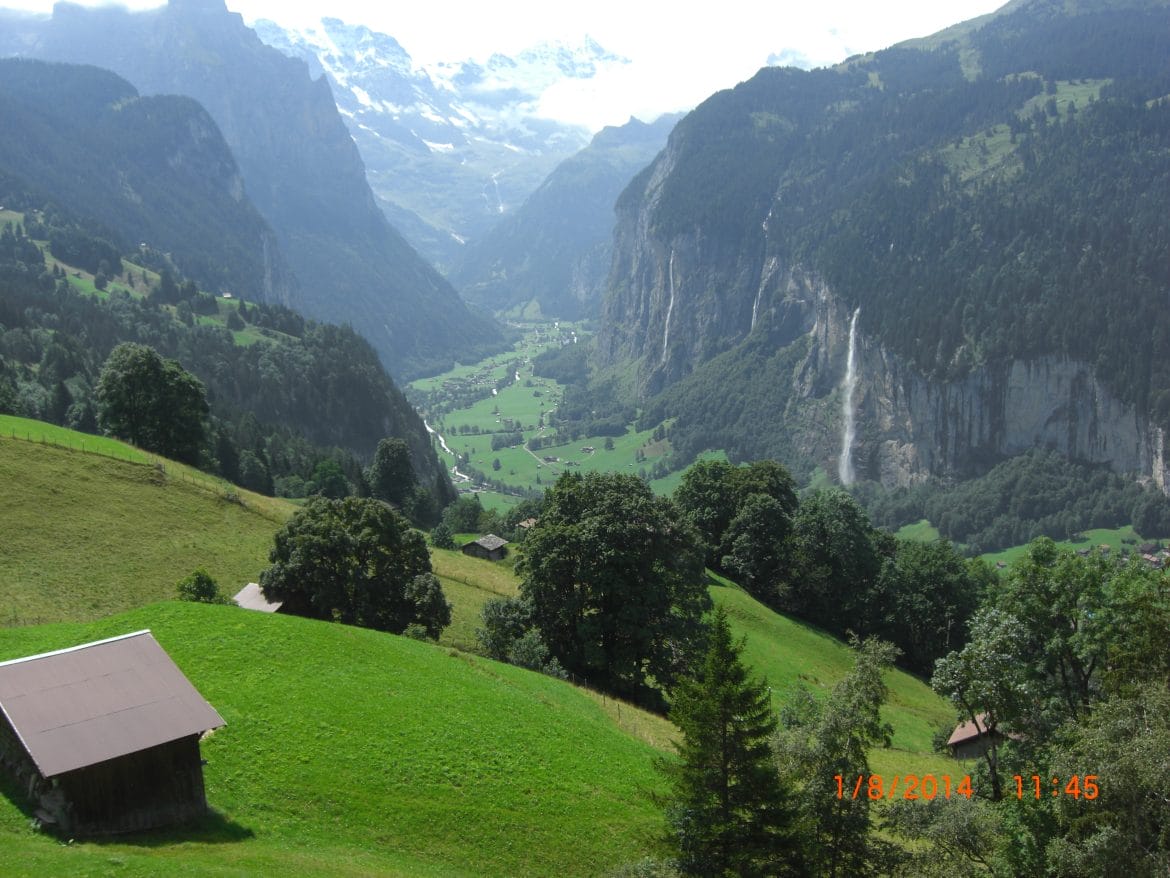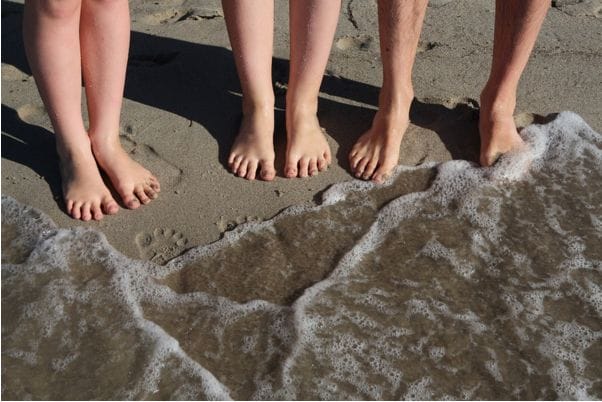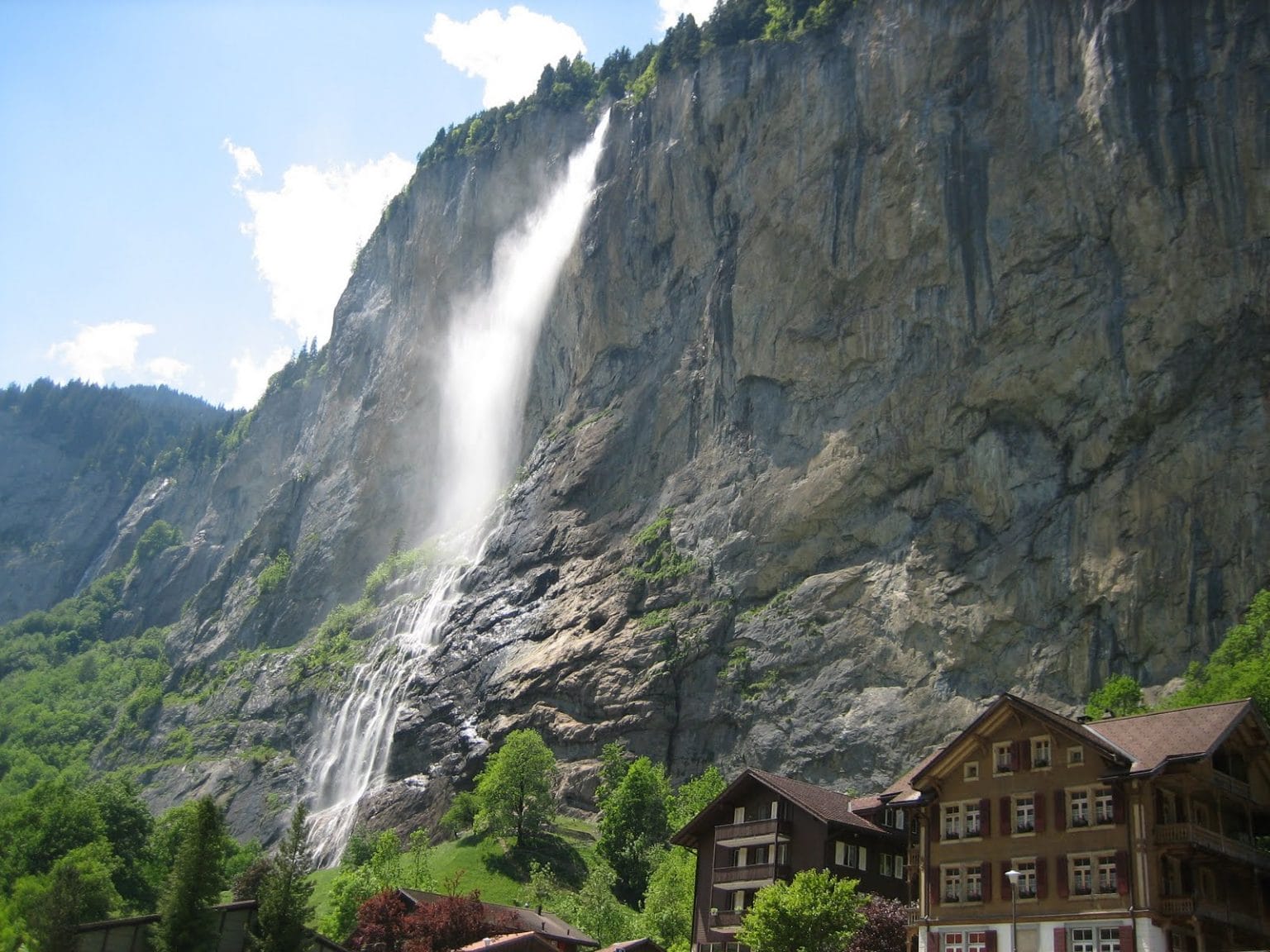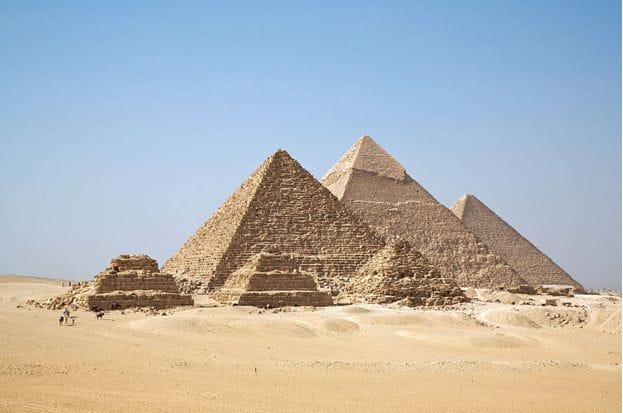This 1.5 hour, 7km walk to the head of the Lauterbrunnen valley is a classic. It was our introduction to the region, and now, a quarter of a century and many visits later, its enchantment remains undiminished.
The U shaped valley, 1km across, is one of the deepest in the Alps. Numerous waterfalls (72 in the whole valley) tumble over its towering, near vertical rock walls to feed and swell the rushing, pure waters of the Weisse Lütschine. The great mountains at the end of the valley add to the drama.
It is highly likely that the valley was the inspiration for Rivendell, the home of Elrond, in J.R.R.Tolkein’s ‘The Hobbit’. Tolkien visited the valley in 1911, and without specifying Lauterbrunnen, confessed that Rivendell was based on his 1911 journey. Additionally his painting of Rivendell bears a marked resemblance to the Lauterbrunnen valley.
After leaving Lauterbrunnen railway station you follow the main road through the village. On the right you will see the famous Staubbach fall, whose 297m cascade makes it one of the highest unbroken falls in Europe. Goethe described it as ‘a most wonderful thing’ and it inspired his poem ‘Song of the Spirits over the Waters’. Byron compared the fall to the long, white tail of the pale horse of the Apocalypse. But how impressive it appears will depend upon the amount of recent rainfall.
The Staubbach fall is less than 1km from the village. If you desire a closer look, there is a steepish path that leads uphill, then through a short tunnel in the rock, to a viewing platform. If the fall is in full spate prepare for a bit of a soaking. The path is only open in summer.
For 2.5km you walk along a narrow road that carries some cautiously moving traffic. But most vehicles are heading for the campsite that you soon pass, and they are but a minor distraction from the heady drama of your surroundings.
After passing the Spissbach fall (265m) you reach the Buchenbach fall (380m), and here you might well be startled by the sound of a base jumper’s unfurling parachute, moments before landing. Devotees of this mad, extreme sport gather here, from around the globe, to get their adrenalin rush.
A short way further on the number of walkers decreases as some turn right towards the Trümmelbach Falls, leaving just those who are being irresistibly drawn deeper into the valley, towards the glistening snowy peak of the Breithorn.
At Stägmatta (4km) you should continue straight ahead, treading a footpath that runs close to the river. This is the shadiest part of the walk.
Ignoring signs to the Shilthornbahn you follow the path as it moves away from the river and stays close to the valley side. An arched bridge sees you across the Sefinen Lütschine and brings you to the rear of the small village of Stechelberg. After crossing the Weisse Lütschine you arrive at the Stechelberg hotel, a pleasant enough place for rest and refreshment.
 In 2001 the head of the Lauterbrunnen valley was included in an area that was accepted as a UNESCO World Heritage Site. An information panel in Stechelberg is the starting point of six UNESCO World Heritage themed trails (three more are being planned).
In 2001 the head of the Lauterbrunnen valley was included in an area that was accepted as a UNESCO World Heritage Site. An information panel in Stechelberg is the starting point of six UNESCO World Heritage themed trails (three more are being planned).
The turning point for the post bus to Lauterbrunnen is just a short way down the road from the Stechelberg hotel.




